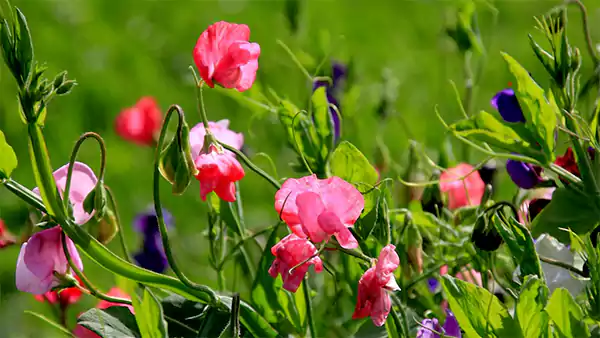
I fall in love with the charming appearance of the Sweet Pea Flowers every single season. They always manage to steal my heart with their pastel color petals and irresistible fragrance.
The blooms of this annual flowering species are extremely delicate, but it does not demand any special care. Its low-maintenance nature makes it a seamless addition to my plant collection, and every time I see my pet dog, Coco, sniffing these flowers, my heart instantly flutters.
Moving forward, in this article, I have covered everything I treasure about Sweet Pea flowers, including their origins, various types, and an easy care guide to help you enjoy them.
| Quick Takeaways | |
| Native Region | Mediterranean region, specifically Sicily, southern Italy, and the Aegean Islands. |
| Botanical Name | Lathyrus odoratus |
| Growth (Height and Width) | 6-10 ft tall and 2-3 ft wide |
| Hardiness Zone | 2-11 USDA |
| Growth Habit | Climbing Vine |
| Symbolism | Kindness, Gratitude, Renewal, Hope |
| Toxicity | Poisonous (not edible) |
Sweet Pea Flowers – Origin and General Description
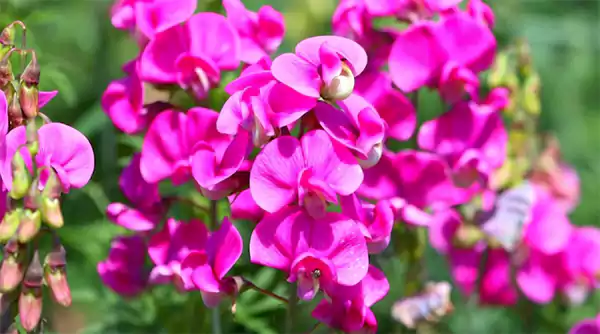
The Sweet Pea flowers, botanically known as (Lathyrus odoratus) are native to the Eastern Mediterranean region, specifically Sicily, southern Italy, and the Aegean Islands. These blooms have long been associated with many different emotions.
I admire Sweet Pea climbing plants for their charming fragrance and graceful appearance. The colorful blooms are truly a feast for the eyes, and because of their irresistible scent, my mother has given a quirky pet name to the flowers: “perfume for the garden”.
Whenever I see a flourishing Sweet Pea bush, it feels like the bloom has added elegance and a sweet melody to the garden space. Is it just me, or do you also feel like the delicate petals of the bloom have many stories to tell?
Significance of the Sweet Pea Blossoms
The Sweet Pea flowers are not only eye-pleasing, but are also deeply rooted in the history and culture since the 17th Century. It is popularly known as the April birth month flower and represents different emotions like kindness, gratitude, and friendship.
- In Victorian England, planting sweet peas often symbolized the end of the frost season, making April the month of goodbyes.
- The butterfly-like blooms of the Sweet Pea flowers are often associated with freedom and good luck across the globe. In France, the French brides often receive bouquets made of these blooms, symbolizing new beginnings.
- Furthermore, in Japan, these spring flowers are said to convey emotions like hope, renewal, and a fresh start. These are also gifted casually or on occasions, expressing joy and happiness.
No matter what culture it belongs to, these elegant and ornamental blooms always manage to capture people’s attention. You simply need Sweetpeas from seed, and just like Jacobbaby got to pick a blooming bouquet every day from the garden, you can have yours too!
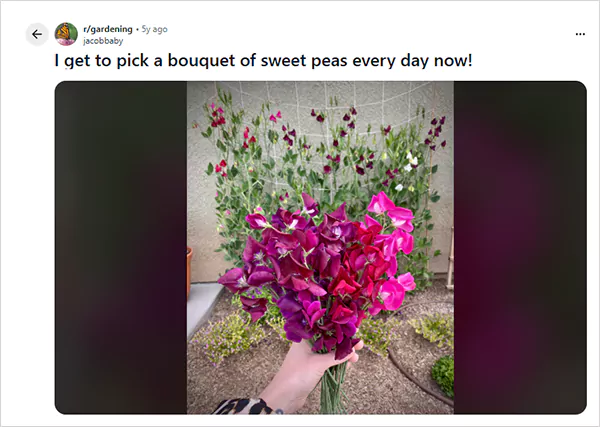
Botanical Background of the Sweet Pea Seeds
This Sweet Pea flower is different from the edible variety and is also said to be a toxic member of the legume family. Given below is the botanical background of the genus for your ease.
| Botanical Background of the Sweet Pea Planting Seeds | |
| Kingdom | Plantae |
| Clade | Tracheophytes |
| Clade | Angiosperms |
| Clade | Eudicots |
| Clade | Rosids |
| Order | Fabales |
| Family | Fabaceae |
| Genus | Lathyrus odoratus |
Lathyrus odoratus is an annual climbing plant and is often grown in front lawns or backyards due to its ornamental appearance. The honey-like fragrance of the blooms instantly uplifts the mood, which makes them an ideal gifting option.
What are the Different Types of Sweet Pea Flowers?
I personally like adding these aromatic blooms to my balcony garden, but if you wish to gift these picture-perfect flowers to someone you adore, do not restrict yourself to a single type. Keep scrolling and explore some astonishing varieties of the Sweet Pea flowers.
| Cultivar Name | Image | Key Aspects |
| Beaujolais | 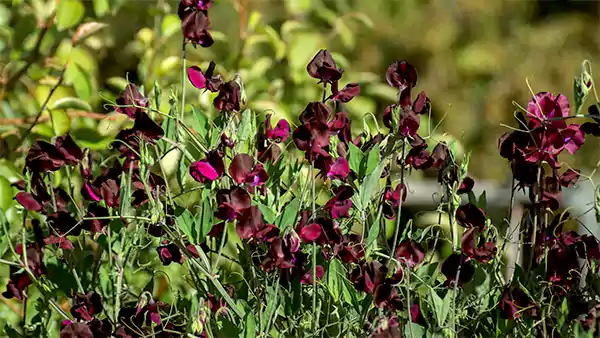 |
|
| My Navy | 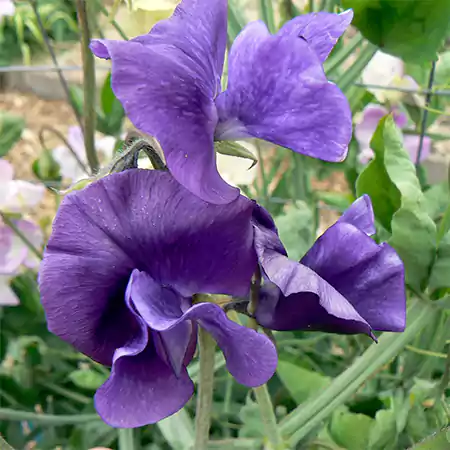 |
|
| Henry Eckford |  |
|
| Air Warden | 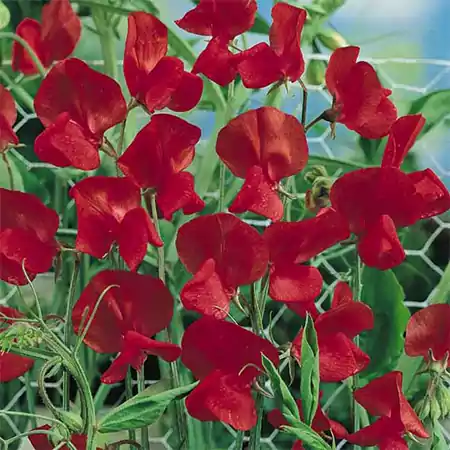 |
|
| Noel Sutton | 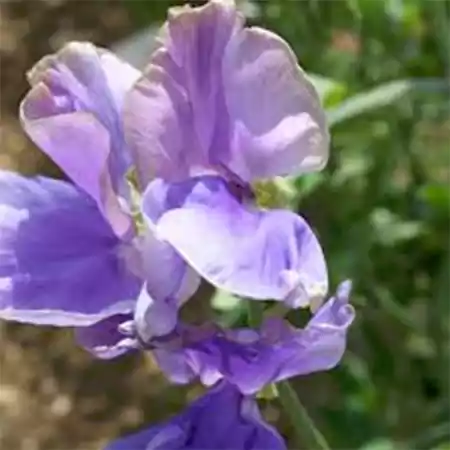 |
|
| Mrs. Collier |  |
|
| Lord Nelson |  |
|
| Turquoise Lagoon |  |
|
| Swan Lake | 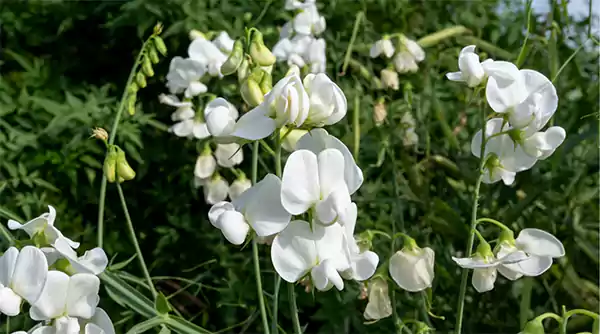 |
|
| Miss Wilmott |  |
|
After exploring all these stunning types of Sweet Pea blooms, I honestly can’t pick just one favorite. Their fragrance, fluttery leaves, and their ability to brighten up any dull corner make them a constant in my garden.
Though the plant is not pet-friendly, what amuses me is that even Coco loves sniffing around them, and his wagging tail makes my day!
Care Guide for the April Birth Month Flower
I personally feel that growing these flowers and cultivating peas is a simple act of kindness. It truly amazes me how, even with simple care, this genus rewards me with such showy blossoms.
Furthermore, if you are wondering how to grow Sweet Peas, here is an elaborate care guide that I followed for flourishing blooms.
| Sunlight Exposure: Sweet Peas generally grow well under direct sun exposure. They need a minimum of 4–6 hours of bright sunlight, but during a dry spell, try placing the plant in a shady area. |
| Water Needs: Moderate watering does wonders for the bloom. During the initial growing season, if the soil feels dry, water the plant frequently, but avoid overwatering, as it can further cause root rot. |
| Soil Type: Prefer sowing the seeds for Sweet Peas in a well-draining, nutrient-rich soil having a pH level of 7.5. Before planting the seedlings, consider mixing organic compost into the soil for better absorption of nutrients. |
| Fertilizer: I prefer fertilizing my floral wonder during the growing season. For optimal development, consider spraying liquid fertilizer having high potassium or phosphorus. |
I understand growing this exotic-looking plant can sometimes be overwhelming, but trust me when I say this: all they need is a little patience and an accurate care guide.
Real Issues Faced By Plant Lovers and My Personal Take on Them
Whenever I have a successful experience of growing a botanical marvel, I like sharing it on Reddit. However, this time, when I was casually lurking on the site, I came across some common problems that novice plant lovers were facing.
It took me back to the time when I was experimenting, and trust me, the struggle for growing this genus is universal. Moving further, I have listed some relatable screenshots of people facing issues while growing Sweet Pea, with some practical solutions that worked for me.
User Issue 1: Literary_Flamingo has been growing Sweet Pea Flowers for quite some time now, but as the season changed, the stalks of the bloom turned yellow.

My Suggestion: During the initial stages, when I faced a similar issue, I placed the pot in a shaded area and cut off all the dead leaves. Try watering the flower early in the morning, and if the soil dries up, water in the evening as well. Do not make the soil soggy.
Carefully research when to plant the Sweet Pea seeds depending on the zone you are living in, and try using organic potting mix.
User Issue 2: Another flora lover, Billem 16, added Sweet Pea flowers to their garden bed, but instead of the colorful blossoms, all they saw growing were glossy green leaves.

My Suggestion: I would recommend limiting the use of NPK fertilizer. When I faced a similar issue, I made sure not to stress the plant too much with excess watering and chemical supply. If you are sowing the seeds during the onset of summer, make sure to give adequate water to the plant and do not over-fertilize it.
User Issue 3: Trust me when I say this, I was really frustrated with this particular issue when I embarked on my journey of growing Sweet Pea flowers. The tiny leaves were curling, drying, and falling off, despite receiving constant care and attention.
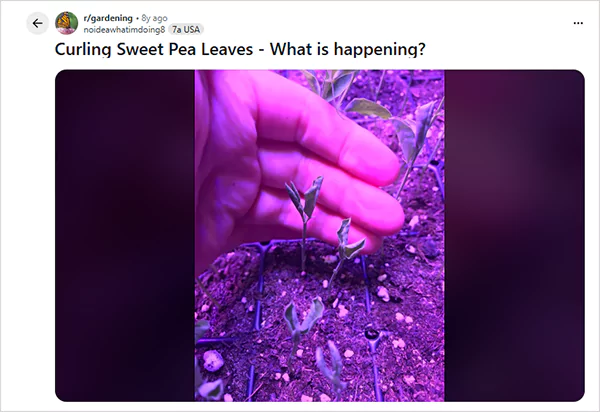
My Suggestion: I myself realized that I was obsessed with the care of the genus. My first mistake was sowing the seeds during a dry spell, and that too in an area where it was getting direct scorching heat. Using a permeable potting mix worked wonders for me. I also shifted the blooms to a nursery where it was getting filtered sunlight.
Although the genus is considered an easy-to-grow species, even a small mistake made unknowingly can quickly harm the plant’s overall health.
Photo Gallery of the Botanical Marvel
I recently stumbled upon a Reddit thread calling out all the Sweet Pea enthusiasts, and guilty as charged, I can’t stop obsessing over this magnificent plant.
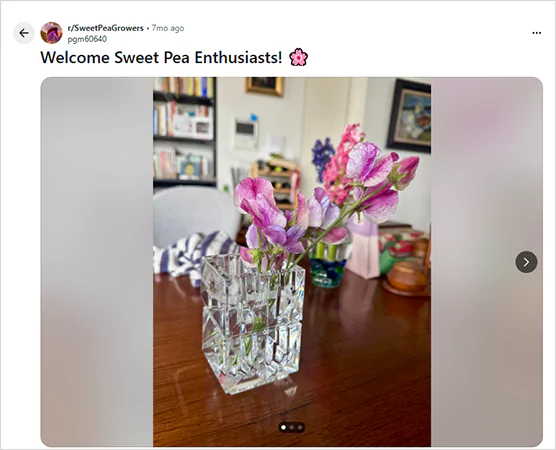
Here is my personally curated photo gallery, having pictures of Sweet Peas, and yes, I cannot resist showing them off!
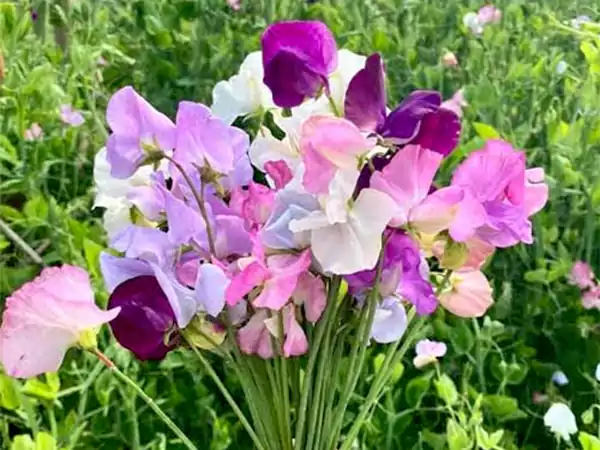
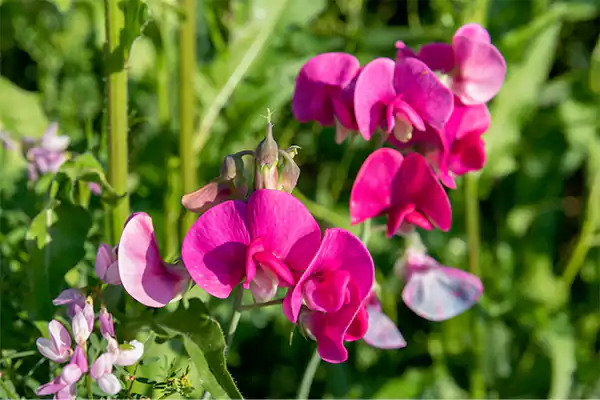

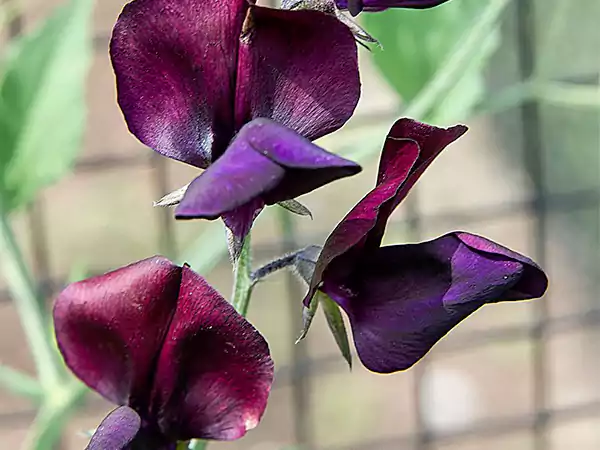
Conclusion – Growing Sweet Peas Has Never Been This Easy!
I feel that Sweet Pea flowers bring a special kind of joy into my life. The ravishing and showy blooms of the genus are simply eye-catching. There is no denying the fact that out of all the plants in my garden, sowing Sweet Pea seeds has been a rewarding decision. Its historical and cultural significance reminds me how ethereal this plant is.
Although growing them can sometimes be a task, I hope that this article helped you out in some way. More than the ideal growing conditions, the genus requires patience, and it will surely fill your front lawn with its radiant flowers one day!
Will Sweet Pea flowers come back every year?
Although most of the Sweet Pea flowers are annual in nature and do not come back every year, many cultivars are perennial and give showy blossoms every season.
What month do Sweet Peas flower?
Sweet Pea typically flowers during the spring and summer seasons, making any garden space vibrant. Many hybrid varieties of the genus can be grown during frost conditions, too.
What do Sweet Pea flowers symbolize?
Sweet Pea flowers tend to symbolize a variety of emotions. The white flowers represent peace and gratitude, while the pastel pink ones convey happiness and hope.
What does the Sweet Pea flower smell like?
The blooms of the Sweet Pea often smell like a combination of honey and orange. Its scent is quite fruity and floral.
Are Sweet Pea flowers edible?
No, Sweet Pea flowers are extremely poisonous and are toxic to humans, cats, dogs, cattle, and other animals.


